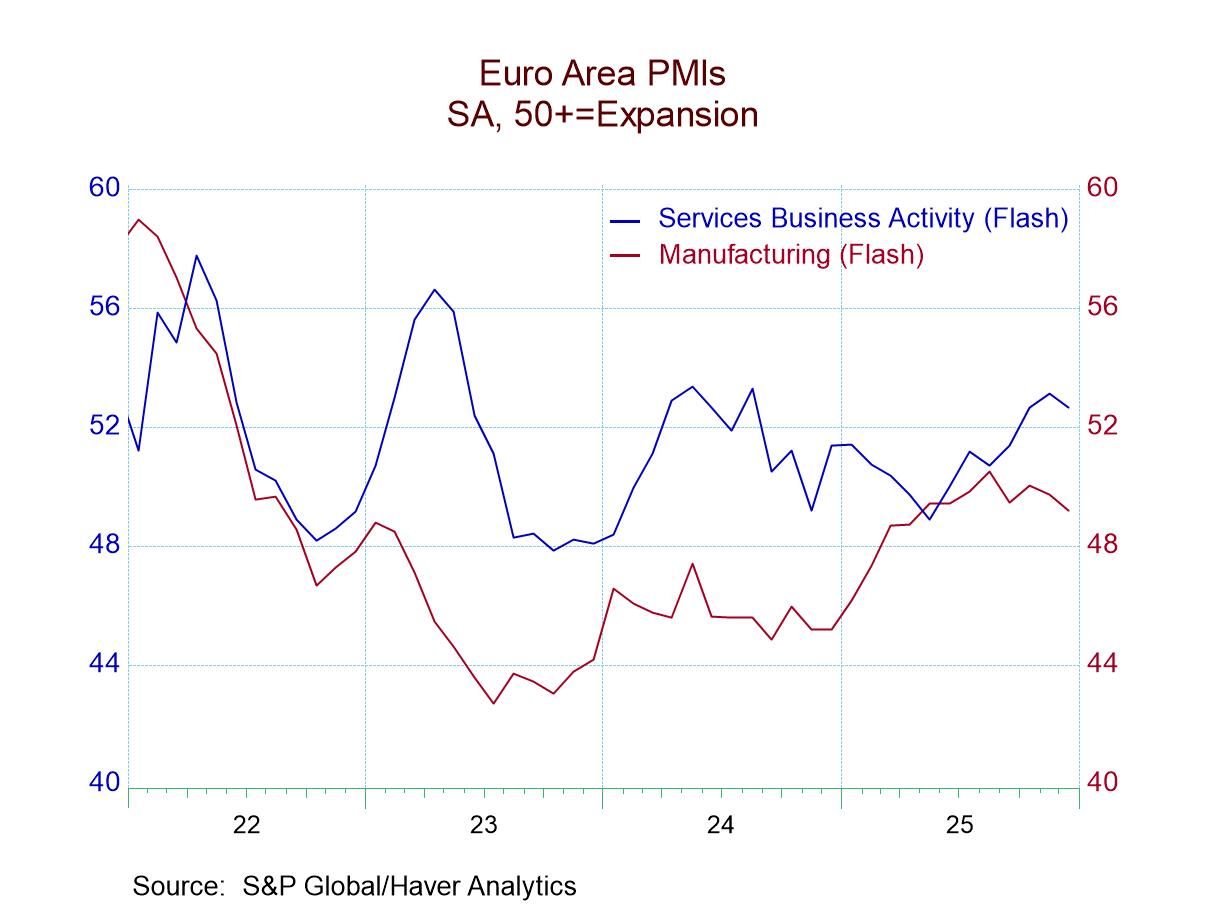Texas Manufacturing Activity & Outlook Deteriorate in April
by:Tom Moeller
|in:Economy in Brief
Summary
- Production & employment fall.
- New orders growth and shipments improve.
- Prices received & wages ease.


Manufacturing activity in Texas weakened during April, according to the Texas Manufacturing Outlook Survey conducted by the Federal Reserve Bank of Dallas. The general business activity index fell to 1.1 this month, the lowest level since July 2020. An improved 19.5% of respondents reported improved business activity in April, but a greatly increased 18.4% reported a deterioration. The company outlook index weakened to -5.5 this month from -0.7 in March. These figures are the lowest since the spring of 2020. Data were collected between April 12-20 from 94 manufacturers.
The production index fell to 10.8 in April from 13.2 in March. It was down from a high of 48.6 in March 2021. The unfilled orders reading eased to 10.5 and reversed half of its March rise to 12.4 in the prior month.
Labor market activity eased. The employment reading weakened to 24.6 from 25.5. A slightly higher 34.3% of respondents planned to raise employment while a greatly increased 9.7% planned to lower it. The wages & reading slipped to 50.9 from 55.2.
The index for prices received for finished goods rose fell to 43.5 in April and reversed all of the prior month's rise to 47.8, which was the highest level since October of last year. The latest reading reflected a lessened 46.9% of respondents reporting price gains and an increased 3.4% reported price declines. The index of prices paid for raw materials fell sharply to 61.5, which was the lowest level since February of last year.
The future general business activity index fell sharply to 1.8 in April from 8.2 in March. It was the lowest reading since May 2020. Expected production, shipments and wages & benefits each fell. The expected growth rate for new orders fell sharply to the lowest level in two years.
Each index is calculated by subtracting the percentage reporting a decrease from the percentage reporting an increase. When all firms report rising activity, an index will register 100. An index will register -100 when all firms report a decrease. An index will be zero when the number of firms reporting an increase equals the number reporting a decrease. Data for the Texas Manufacturing Outlook can be found in Haver's SURVEYS database.
Tom Moeller
AuthorMore in Author Profile »Prior to joining Haver Analytics in 2000, Mr. Moeller worked as the Economist at Chancellor Capital Management from 1985 to 1999. There, he developed comprehensive economic forecasts and interpreted economic data for equity and fixed income portfolio managers. Also at Chancellor, Mr. Moeller worked as an equity analyst and was responsible for researching and rating companies in the economically sensitive automobile and housing industries for investment in Chancellor’s equity portfolio. Prior to joining Chancellor, Mr. Moeller was an Economist at Citibank from 1979 to 1984. He also analyzed pricing behavior in the metals industry for the Council on Wage and Price Stability in Washington, D.C. In 1999, Mr. Moeller received the award for most accurate forecast from the Forecasters' Club of New York. From 1990 to 1992 he was President of the New York Association for Business Economists. Mr. Moeller earned an M.B.A. in Finance from Fordham University, where he graduated in 1987. He holds a Bachelor of Arts in Economics from George Washington University.






